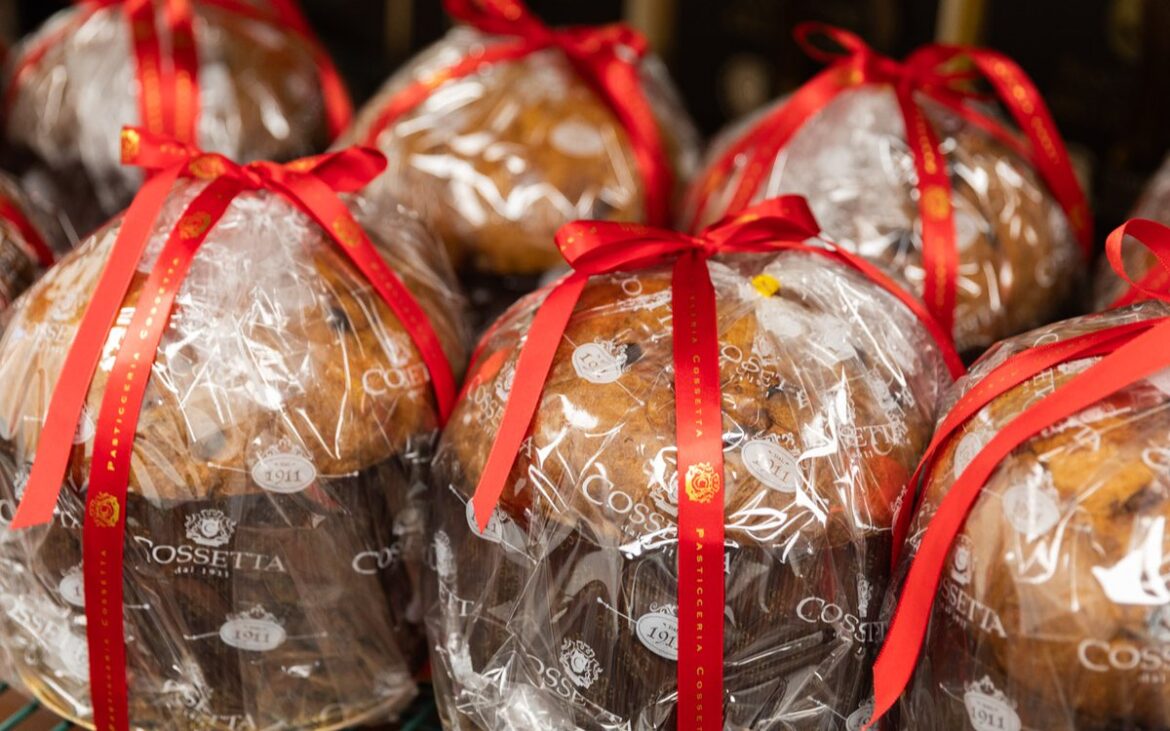Maybe you’ve wandered into Cossetta’s Italian marketplace around the holidays and found—to the right of the bread counter doling out pizza romano—shelves and shelves stacked to the ceiling with boxes of “panettone artigianale,” packaged neatly in gold-embossed boxes and tied up with a bow. Cossetta’s panettone, a dome-shaped Italian sweet bread typically studded with fruit or chocolate, is a Christmastime classic, and therefore one of the marketplace’s most coveted items during the holiday season. As December stretches on, the shelves begin to empty.
Beginning this holiday season, though, we’re unlikely to face a panettone shortage at Cossetta. Owner Dave Cossetta has built out a sprawling panettone warehouse and production kitchen just down the street at the corner of Chestnut and Exchange Street—with new imported equipment and a dedicated team of six bakers, Cossetta plans to massively ramp up production and also launch an e-commerce site to sell and ship the panettone nationwide.
Why the big investment? As popular as it is locally, Cossetta’s panettone has racked up its own share of national acclaim—this year, Cossetta took home first place in the Americas Division at the Coppa del Mondo del Panettone for the fourth time in the “traditional” category, and for the first time in the “chocolate” category. The team has spent some 15 years slowly perfecting their recipe, training under maestros in Italy—the “mother” dough that they use, Dave Cossetta says, was in fact brought back from a trip to Italy. Now, he thinks the recipe has reached its pinnacle and final form.
Head baker Jaime Martinez (second from left below) is Cossetta’s own panettone maestro—he leads the baking team through each batch’s 56 hours of production. If you’ve had (good) panettone before, you know that it is almost confoundingly delicious in form, taste, and texture: As tall as it stands, the bread is light as a cloud, sweet and slightly tangy due to its long fermentation cycle. The dough is proofed four different times throughout the process, and after its final bake, is hung upside-down to help the bread maintain its signature dome shape.
There are two, soon to be three, mixers at work in the kitchen—one a 4,500-pound industrial beast that Cossetta had imported from Italy. (He had to take special precautions, he says, to make sure that it wouldn’t fall through the second-story floor.) He also has a reverse-osmosis water filtration system rigged up on the first floor, which removes the minerals of St. Paul city water to approximate the kind of Alps-derived water that panettone is traditionally made with in Italy. All in all, when the kitchen is fully assembled, the goal is to churn out around 600 panettone every day.
Keep an eye out for Cossetta’s e-commerce site to launch in early December—in the meantime, it’s never too early to grab one off the shelf.
November 19, 2025
2:58 PM


Dining and Cooking